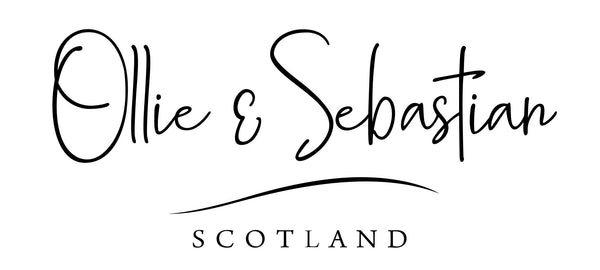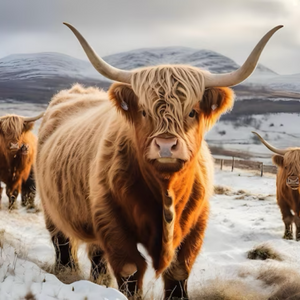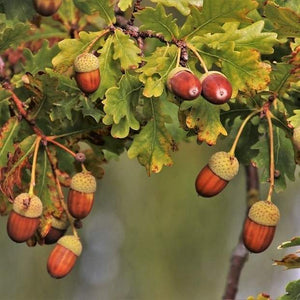Wax
As candle makers we often get asked about the waxes we use. Consumers are more conscious these days which is great. Soy wax is definitely on trend right now; it’s marketed as a sustainable, renewable resource, un-reliant on fossil fuels. We don’t use soy wax right now and we’d like to tell you why.
Put simply, there’s a lot to take into consideration with the ethics between resources, a lot more than just what they’re made from. We want to highlight the importance of constantly questioning things. If you're buying anything for its Eco-credentials, you should see what information the supplier provides. Simply saying Eco-friendly isn't enough, neither is assuming something is just because at the very basic level, it's derived from a plant.
- Just saying 'Eco-friendly' doesn't make a product Eco-friendly. It's much more complex than that.
- While a soy plant is a natural product, soy wax is not. The plant is grown, then distributed, then processed - to be burnt as wax.
- We believe that if we were to use soy wax currently, it would have more of a negative global impact than positive environmental benefit.
- We use recycled waste to have as little negative impact on our environment and economy as possible, as we believe every non-essential product should.
- The phrase 100% soy wax can be misleading. A candle using soy wax is processed (like other candles) and can have additives (like other candles) to make it burn.
- There's no significant, scientifically backed evidence to prove that soy wax is in any way less harmful, or cleaner burning than other wax types.
- Soy grown on an industrial scale has a multitude of negative environmental and socio-economic impacts. Just being a plant doesn't make it Eco-friendly.
Soy wax production:
Soy wax uses a mechanical process to separate the soybean matter from the oil. The oil is then refined and bleached. Soybean oil is then heated to 140-220 degrees Celsius in a hydrogenating machine. More than just soy goes into making soy wax, the wax is chemically distilled with hexane, bleached with chlorine, deodorized with boric acid and then hydrogenated.
Now, this isn’t to say that any other wax doesn’t use chemical processes in production. But we want to drive home - soy wax is more than just soybean off the plant.
- Soy wax isn’t natural. Soy is natural – if it isn’t GM soy, or hasn't been planted in the place of natural rain-forest that was formed over hundreds of years.
-
Natural doesn’t mean sustainable - not if it’s grown in monocultures on cut down rain-forests on continually decreasing quality soil and at the expense of global water tables.
- To be labelled as a soy candle, it only has to be 51% soy. Even ‘100% soy’ candles may be processed with a small amount of paraffin.
Common misconceptions about soy wax:
There's a lot of common misconceptions promoted by users of soy wax to try and sell their product. Here's some questions answered, backed up by the National Candle Association, the governing body of candle manufacturers in the United States.
DOES SOY WAX BURN CLEANER?
If made well, with sufficiently refined oils, study shows that all wax types exhibit the same clean burning behaviour. Here’s a report on the National Candlemaker’s Association website.
DOES SOY WAX BURN LONGER?
Our regular sizes candles have an average 45/50 hour burn time, we’ve timed it – you can if you like too! That’s on par with any similar size soy candle. If it’s not we’d question what else has been added to it, probably more paraffin.
DOES SOY WAX HOLD THE SCENT BETTER?
Not if you want it to be natural. Even more chemicals are added to help soy wax hold its scent. Smell our candles for yourself, they smell great lit or not.
IS SOY WAX THE ONLY BIODEGRADABLE WAX?
No. Studies have shown that beeswax, paraffin and vegetable-based waxes are all biodegradable.
ARE SOY CANDLES BETTER FOR YOUR HEALTH?
No. Paraffin wax – like all candle waxes – is non-toxic. In fact, paraffin is approved by the U.S. Food and Drug Administration for use in food, cosmetics, and medical applications. Food-grade paraffin is commonly used for manufacturing candles.
IS SOY GOOD FOR ANIMALS?
If you argued that you're eating soy instead of animals, then maybe it could be considered so. If you consider that the large majority of soy is produced to feed and fatten animals with so that they can be fed to humans, probably not, nor if you consider all the animals that have lost their habitat to soy farms.
IS SOY WAX NATURAL?
As we've said before, soy wax isn’t natural. Soy wax doesn't grow on trees. Soy (one of soy wax's constituent materials) is natural – if it isn’t GM soy, or hasn't been planted in the place of natural rain-forest that was formed over hundreds of years. Nearly all candles contain some paraffin to help them burn, along with other material or chemicals to add or hold scents and improve burning. If someone simply tells you a manufactured product is 'natural' with no other evidence or information, we'd advise you to question their motives.
TOXIC? NON-TOXIC?
Like 'natural' 'non-toxic' is another mostly unregulated claim that gets thrown around for marketing purposes without much thought or honesty behind it. 'Non-toxic' means the product doesn't contain ingredients that have been linked to toxic responses in humans. Something can be derived outside of nature and still be non-toxic. Just because something is natural, it doesn't mean it is non-toxic. You can eat food grade paraffin and not expect a toxic response from your body. Food grade paraffin is used widely in the food industry as wrappings for cheese and other food stuffs, it's also an additive in some foods. Obviously, we do not advise eating wax, it holds no real nutritional value and in all waxes there are other additives such as scents or binders which (legally) should be labelled on every candle you buy. What is harmful however, is when people use phrases such as 'non-toxic' dishonestly, wrongly, or just to sell people something.
What wax do we use and why?
We use a mix of vegetable and mineral oil. Yes, mineral oil is paraffin. The paraffin we use in non-toxic, food-grade paraffin.
For us it boils down to several things:
- Can we source ethically produced soy locally at a reasonable cost? No.
- Can we source waste to re-use in our products? Yes.
- Are fossil fuels going to stop being used anytime soon? No – though we’d sure love them to be.
- How can we get more out of fossil fuel waste? Aside from reducing it, by re-using it.
We want to think hard about how we can limit the impact of our products based on where we are right now and the impacts of what we think those actions may be in the future.
We don’t think it would be beneficial to buy cheap GM soy wax to support bad farming practising in another country. We don’t want to increase air and sea miles importing soy to the UK and we don't want to buy a product that has potentially contributed to deforestation, loss of unique habitat and livelihoods.
At the end of the day a candle is a non essential product. (Wait, what? My Ollie & Sebastian candles ARE essential we hear you cry!) We’d rather use a byproduct of gas and oil production, mixed with vegetable oil (vegetables that are not farmed on rainforests), than use an original source product of much controversy, especially if we can’t guarantee its quality, or if we do, have to fly it across the sea to burn it at great expense.
To us, in our situation, it’s a more environmentally responsible choice right now. That’s not to say our views will change as the situation does, or as new information arises - we're always learning. What’s important is that we are going to keep on questioning things.












